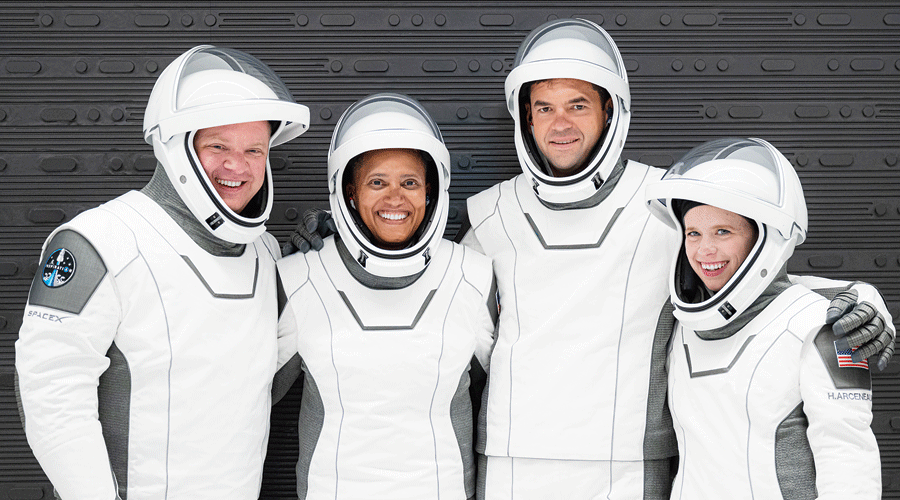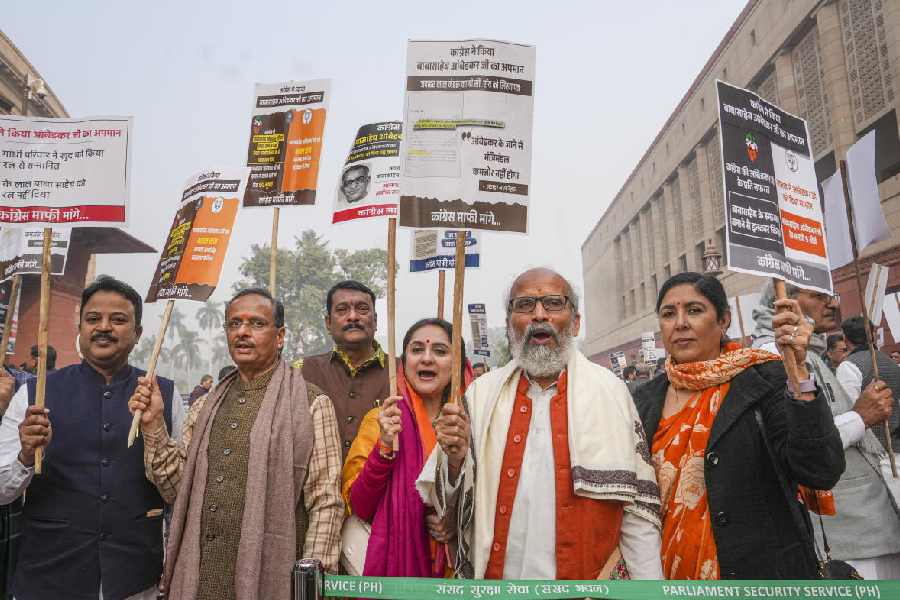I spend a lot of time lately thinking about a fungus called Pilobolus. It lives on dung, mostly from cows and horses, happily munching away, enriching the soil as it goes, until it starts to run out of dung to eat. Then something magical happens: the fungus stops eating and rearranges itself into a giant stalk with a ball of cells — a sporangium — on top.
This apparatus can detect sunlight. Osmosis swells the stalk until, when the pressure rises high enough, it essentially sneezes. The sporangium is launched with a force equivalent to 20,000 times the force of gravity, toward a nearby patch of grass, where another horse or cow is likely to graze.
Our fungus astronaut attaches itself to a stalk of grass. Once eaten, the sporangium passes through the animal’s digestive system and is excreted back out in a rich pile of dung, whereupon the cycle of consumption and escape starts anew.
This is spooky to me. How do the individual fungal cells know when to abandon their anarchy and engage together in purposeful action? Do the fungi know something collectively that none of them know by themselves — when and how to strike out for new territory?
I can’t help thinking of the behaviour of the lowly Pilobolus as a metaphor for the space programme: a species responding to urges it doesn’t fully understand, aspiring to leave the dung pile. What don’t we know about ourselves?
This is not to diminish the accomplishments and passions of today’s space-going moguls. Elon Musk, Richard Branson and Jeff Bezos — the Pilobolus brothers — have put their money where their sci-fi dreams are, following three generations of astronauts and cosmonauts.
Recently, four humans with no astronaut credentials at all — including their leader, tech billionaire Jared Isaacman — circled Earth for three days on Inspiration4, a mission in one of the SpaceXDragon capsules that ferry humans and materials to the International Space Station. Isaacman won’t divulge how much he paid for the flight, only that he hopes to raise money for St. Jude Children’s Research Hospital in Memphis, Tennessee, US, where one of his passengers, Hayley Arceneaux, was once treated for cancer and is now a physician assistant.
Ever since 2001, when Dennis Tito, an engineer-turned-investment guru, paid a reported $20 million to spend eight days on the International Space Station, a handful of wealthy and tech-oriented people have anteed up for an out-of-this-world experience, some of them more than once. This summer, Branson and Bezos each rode their own spaceships to the edge of space, a few dozen miles up.
It’s getting crowded up there around the ultimate velvet rope.
Two years ago, Nasa announced that anyone could visit the space station for $35,000 a day, not counting the cost of getting up there and back again. Tom Cruise is said to have wanted to shoot a movie there. Musk famously said that he wanted to die on Mars, but not yet. And
Alan Stern, head of the New Horizons mission to Pluto and beyond, has now signed up to do space research on a series of Virgin Galactic flights, each costing $2,50,000, paid for by the Southwest Research Institute in Boulder, Colorado, US, where he works.
What does he plan to do with the four minutes of weightlessness he will enjoy on each shot? A lot, Stern, who is definitely not a billionaire, said in a recent telephone interview.
Among other things, Stern will be wearing a biomedical harness on his first flight that will record his body’s response to spaceflight and zero gravity, while taking pictures of star fields to gauge the quality of the spaceship’s windows. Over the next decade, he said, hundreds of space tourists will wear the harness, giving scientists and doctors a trove of data about how ordinary people — as opposed to the fit and finely trained astronauts — respond and adapt, or don’t, to space.
Other items on the agenda may include searching for asteroids very close to the sun, Stern said.
The price of a Virgin Galactic seat has since risen to $4,50,000, but that’s still a bargain, Stern said. Suborbital spaceships like Virgin Galactic’s Spaceship 2 or Bezos’ Blue Origin can fly more often and less expensively than the traditional rockets that Nasa has used to lift sensitive instruments above the atmosphere but that cost $4 million or more per flight.
“I think it is going to blossom,” Stern of New Horizons said of the suborbital business.
We’ve heard all this before. Four decades ago, the space shuttle was going to make space travel routine and cheap, almost as uneventful as a trans-Atlantic plane flight. Then 14 astronauts died.
Now a new generation of rockets, engineers, scientists and explorers are ready to assault the sky. We should hardly be surprised that wealthy people are at the forefront. Space might be the new playground for the rich, like Maui and Aspen have become. Of course, he who pays the piper invariably picks the tune. Do we want the agenda for science — for humanity — to be set by a club of rich white men?
NYTNS











